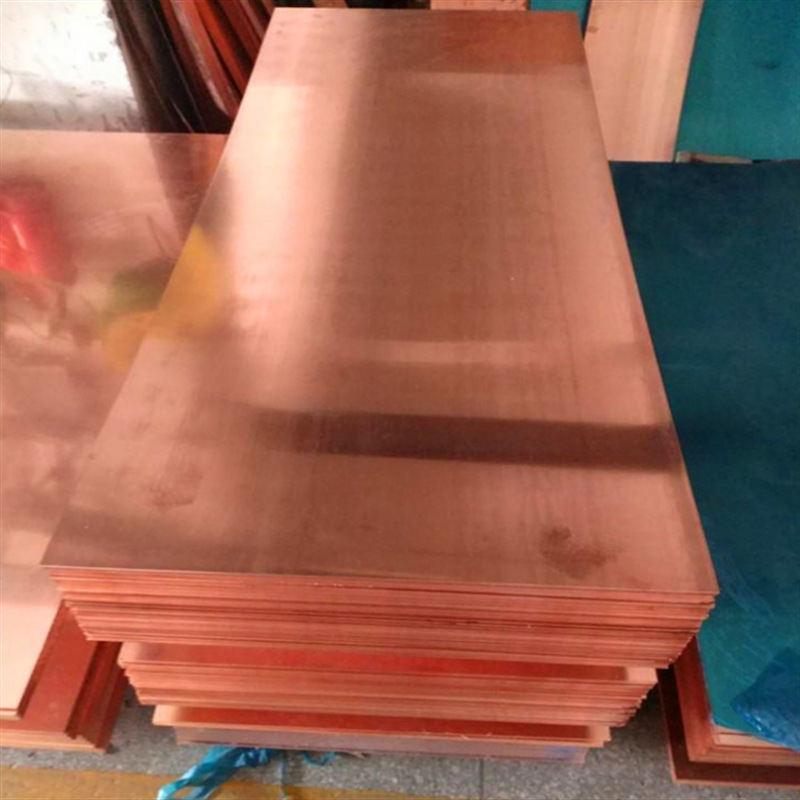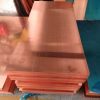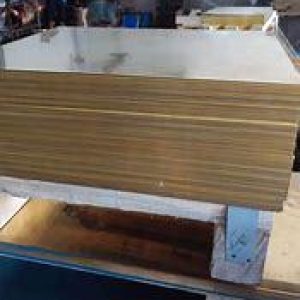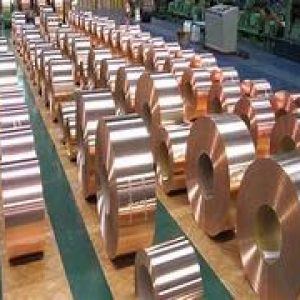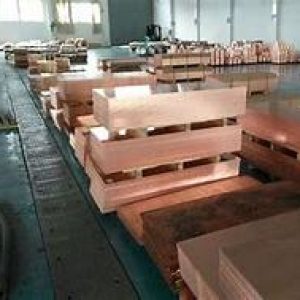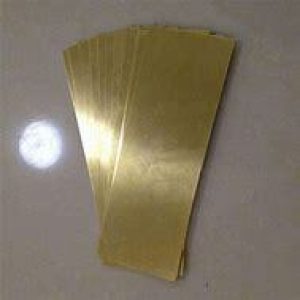Tin Copper Plate Material Description
In addition to containing 3% to 14% tin, tin bronze often also adds elements such as phosphorus, zinc, and lead. It is the earliest alloy used by humans.
It is suitable for manufacturing elastic parts and products in industrial sectors such as instruments and machinery manufacturing.
Tin Copper Plate Material Features
It is corrosion-resistant and wear-resistant, has good mechanical and process properties, can be welded and brazed well, and does not produce sparks during impact. Tin bronze is a non-ferrous metal alloy with the smallest casting shrinkage and can be used to produce castings with complex shapes, clear outlines and low air tightness requirements. Tin bronze is very corrosion-resistant in the atmosphere, sea water, fresh water and steam, and is widely used in steam boilers and marine ship parts. Phosphorus-containing tin bronze has good mechanical properties and can be used as wear-resistant parts and elastic parts of high-precision machine tools. Lead-tin bronze is often used as wear-resistant parts and sliding bearings, while zinc-tin bronze can be used as high airtight castings.
Tin Copper Plate Product Specifications
| Variety | Grade | Status | Specifications (mm) | Guideline | ||
| Thickness | Width | Length | ||||
| Tin phosphorus bronze plate | QSn6.5-0.1 | Y Y2 M T |
0.2~0.49 | 600 | 1000~2000 | GB/T2040—2002 |
| 0.5~2.5 | 600 | 1000~3000 | ||||
| 3.0~12 | 400~600 | 1000~2000 | ||||
| tin bronze plate | QSn4—3 QSn7-0.2 |
M Y T |
0.3~2.0 | ≤550 | 1000~2000 | |
| 3.0~12 | >400~600 | 1000~2000 | ||||
| Aluminum bronze plate | QAl5 QAl7 | R | 8~25 | 600~1500 | ≤2000 | Corporate standards |
| QAl5 | Y、M | 3~12 | 600~1000 | ≤2000 | GB/T2040—2002 | |
| QAl7 | Y Y2 | |||||
| Aluminum bronze plate | QAl9—2 | R | 8~25 | <600 | ≤2000 | Corporate standards |
| Y、M | 3~12 | ≤1000 | ≤2000 | GB/T2040—2002 | ||
| Chrome bronze plate | QA19-4 | R | 8~25 | <600 | ≤2000 | Corporate standards |
| Y | 3.0~12 | ≤1000 | ≤2000 | GB/T2040—2002 | ||
| Chrome bronze plate | QCr0.5 | R | 7~25 | ≤600 | ≤2000 | Corporate standards |
| Y | 0.5~1.5 | 300~600 | 1000~2000 | GB/T2045—80 | ||
| 3~10 | ≤600 | ≤2000 | ||||
| QCr0.8 | R | 8~25 | <600 | ≤2000 | Corporate standards | |
| Y | 0.5~2.5 | 600~1000 | ≤2000 | |||
| Manganese bronze plate | QMn5 | Y、M | 0.5~0.7 | 100~600 | 600~1000 | GB/T2046—80 |
| >0.7~5.0 | 100~600 | 800~1500 | ||||
| R | 8~25 | 600~2000 | ≤2000 | Corporate standards | ||
| Y、M | 0.8~10.0 | 300~2500 | <3000 | |||
| Silicon manganese bronze | QSi3-1 | Y、M | 0.5~2.0 | 300~600 | 1000~2000 | GB2047—80 |
| 3~10 | 600~1000 | 1000~2000 | ||||
| Aluminum zinc bronze plate | QAl5-5-1 | Y | 1.0~2.5 | 600 | 1000~2000 | Corporate standards |
| Imitation gold plate | 18 alloy | M | 0.5~2.0 | 6 | ||
Company Profile
Copper Channel is a trusted global chemical material supplier & manufacturer with over 12-year-experience in providing super high-quality copper and relatives products.
The company has a professional technical department and Quality Supervision Department, a well-equipped laboratory, and equipped with advanced testing equipment and after-sales customer service center.
If you are looking for high-quality copper products, please feel free to contact us or click on the needed products to send an inquiry.
Payment Methods of Tin Copper Plate
L/C, T/T, Western Union, Paypal, Credit Card etc.
Shipment of Tin Copper Plate
It could be shipped by sea, by air, or by reveal ASAP as soon as repayment receipt.
FAQ
Question: What types of copper plates are there?
Answer: Copper plates can be classified according to their composition, manufacturing process and use. Common ones include red copper plates, brass plates, bronze plates, etc.
Question: What is the thickness range of copper plates?
Answer: Copper sheets are available in a wide range of thicknesses, from very thin foils to thicker sheets, depending on the production process and application requirements.
Question: How to calculate the price of copper plates?
Answer: The price of copper plates is affected by many factors, including copper purity, thickness, size, market demand and supply, etc. Generally speaking, the price is calculated based on the weight of the copper plate and the market copper price.
Question: How can copper plates be processed?
Answer: Copper plates can be processed by cutting, bending, stamping, welding and other methods to meet different shape and size requirements.
Question: How to maintain copper plates?
Answer: The copper plate should avoid contact with sharp objects during use to avoid scratches. Regularly clean the dust and dirt on the surface of the copper plate. You can wipe it with a soft cloth and avoid using corrosive cleaning agents such as strong acids and alkalis.
Question: How to judge the quality of copper plates?
Answer: The quality of a copper plate can be judged by observing its appearance, measuring its size and thickness, and conducting chemical composition analysis. A high-quality copper plate should have a flat surface, uniform thickness and good electrical conductivity.
Question: What are the environmental protection requirements for copper plates?
Answer: Copper plates should comply with environmental protection requirements during production and use, such as reducing the emission of waste gas, waste water and solid waste, and using environmentally friendly production processes and materials to ensure the environmental performance of the product.

